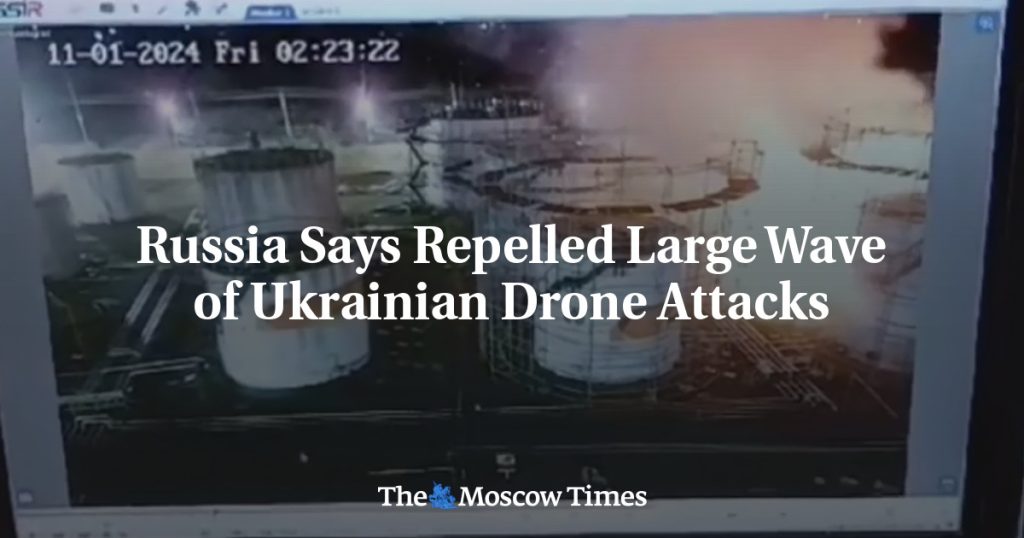Russia’s military announced that it had destroyed 83 Ukrainian drones over various Russian regions and annexed Crimea in a single night. The incident resulted in at least one drone crashing into an oil depot in the town of Svetlograd, sparking a fire. Fortunately, no injuries were reported in this incident. The depot, owned by state oil giant Rosneft, had the capacity to store up to 6,700 cubic meters of fuel products. Videos circulated on anonymous Telegram news channels showing the moment the drone struck the facility and the subsequent blaze.
In the Bryansk region, air defense systems shot down 38 drones between Thursday night and Friday morning, according to Governor Alexander Bogomaz. However, Russia’s Defense Ministry claimed that only 20 drones were downed in that region. In the neighboring Kursk region, where Ukrainian forces had previously launched an incursion in August, the army reported downing 36 drones. Additionally, 12 drones were intercepted over annexed Crimea, eight destroyed over the southern Voronezh region, four over the Orlov region, and three over the Belgorod region. The increasing use of drones in military actions is a concerning development in the conflict between Russia and Ukraine.
Ukraine’s General Staff revealed that Russia had launched a record 2,023 drones against Ukraine in October, with approximately half being successfully repelled. This demonstrates the growing sophistication and frequency of drone attacks in the ongoing conflict. The use of drones has become a significant aspect of modern warfare, enabling countries to conduct surveillance, launch attacks, and gather intelligence. Both Russia and Ukraine are employing drone technology in their military strategies, leading to increased tensions and potential escalation in the conflict.
The Moscow Times, an independent news outlet in Russia, faces challenges as it is labeled as an “undesirable” organization by Russia’s Prosecutor General’s Office. This unjust labeling puts the staff at risk of prosecution and criminalizes their work, ultimately limiting freedom of expression and independent journalism in the country. The Moscow Times continues to strive for accurate and unbiased reporting on Russia, despite facing repression from the authorities. The outlet relies on support from readers to continue its work and defend open journalism in the face of censorship and suppression.
The situation between Russia and Ukraine remains volatile, with ongoing military engagements, drone attacks, and escalating tensions. Both countries are grappling with complex security challenges, territorial disputes, and political turmoil. The use of drones in military operations adds a new dimension to the conflict, posing significant threats to civilians, infrastructure, and regional stability. International observers are closely monitoring the situation, urging diplomatic efforts to de-escalate tensions and prevent further violence in the region. The conflict underscores the importance of dialogue, negotiation, and peaceful resolution to address the root causes of the conflict.
As the conflict between Russia and Ukraine continues to unfold, the role of independent journalism in providing accurate and impartial information becomes increasingly crucial. The Moscow Times and other media outlets face challenges in reporting on the conflict due to censorship, legal restrictions, and intimidation tactics by authorities. Supporting independent journalism is essential in upholding the principles of freedom of expression, transparency, and accountability. In the face of repression and threats to press freedom, it is imperative to defend the rights of journalists to report critically and independently on important events, including the ongoing conflict in Ukraine.


